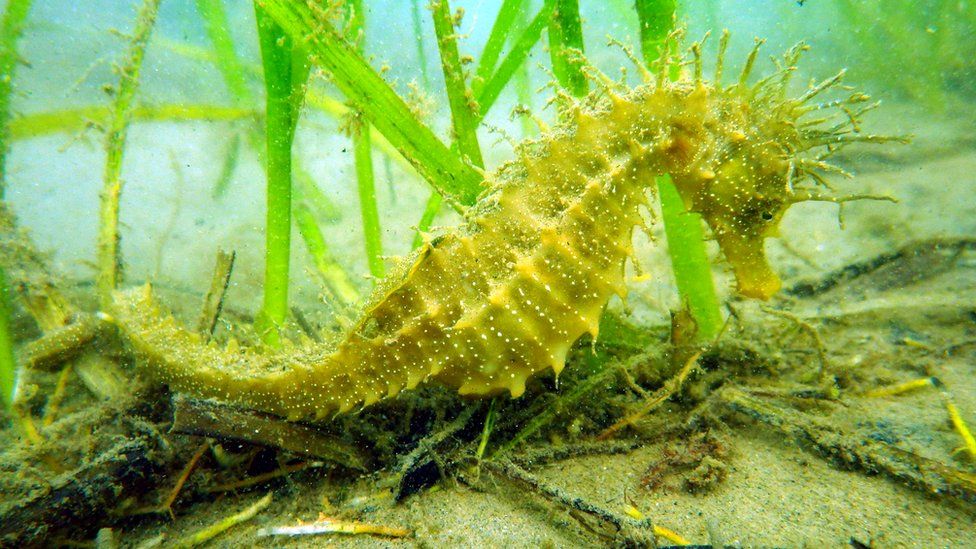Studland Bay: Funding to boost seagrass conservation efforts
- Published

A conservation project has received more than £180,000 in funding to protect the delicate eco-system of a Dorset coastal beauty spot.
The grant for the Studland Bay Marine Partnership will pay for an additional 57 so-called eco-moorings for boats.
It also means a research and monitoring programme by the partnership, established in 2021, will continue.
The group said it was "fantastic news for residents, visitors, boaters and the environment".
Studland Bay is home to Dorset's most extensive seagrass meadow and provides a unique habitat for lots of important species, like the spiny seahorse and the endangered undulate ray.
The Studland Bay Marine Partnership has been awarded £186,000 from the Marine Management Organisation (MMO) Fisheries and Seafood Scheme to support the conservation of its marine ecosystems.
The MMO's Michelle Willis said Studland's seagrass played a "vital role" in the marine ecosystem.
"By supporting projects which will help to protect and recover Studland's seagrass beds for the future we're delivering on our commitment to protect our precious marine environment, support economic growth and enable sustainable marine development," she said.
A voluntary no anchor zone (VNAZ) within the bay was established in 2021 by the MMO to discourage the dropping of anchors, which can damage the seagrass meadow.
Ten eco-moorings were initially placed at the site by the Seahorse Trust charity, with a total of 31 now in place.
They use a helical screw anchor, which is driven into the seabed and attached to the mooring buoy via an elastic band. Its flexibility means it does not scour the seagrass like a conventional anchor.
David Brown, chairman of the The Studland Bay Marine Partnership, said: "Receiving this funding supports the partnership to continue the important work of conserving and preserving Studland Bay for future generations to enjoy."
Seagrass
- Across the globe, there are more than 70 species of seagrass, growing in shallow and sheltered coastal areas
- It absorbs 10% of the ocean's carbon each year and captures carbon up to 35 times faster than tropical rainforests
- Seagrass builds its leaves and roots using carbon, which it extracts from water through the process of photosynthesis, and it holds on to it even after it dies off
- Dead plant material decomposes slowly on the ocean floor, and this means that the carbon stored within is eventually buried under the seabed
- Seagrass is critically endangered and appears on the EU Red List of habitats
Source: BBC Earth
Follow BBC South on Facebook, X, or Instagram. Send your story ideas to [email protected].
- Published8 June 2022
- Published21 July 2021
- Published2 June 2020